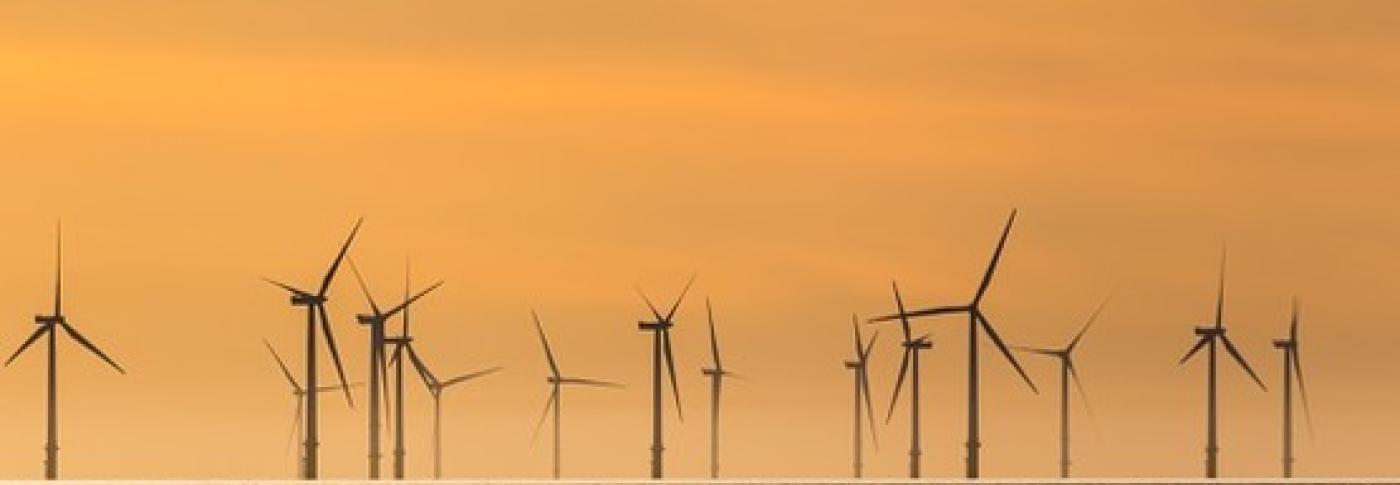
FES 2020 - Net zero and the rise of offshore wind
30 Jul 2020 - 4 minute read
Guest blog – Dr Amir Alikhanzadeh, Power Systems Practice Manager at the Energy Systems Catapult, explores the rise of offshore wind, and what new insight our latest Future Energy Scenarios (FES) are bringing to the key role it will play in helping the UK achieve its 2050 net zero targets.
Driven by net zero targets, falling costs and improving technology, offshore wind is set to play a massive role in helping the UK achieve a carbon neutral economy by 2050. Yet further innovation is required, and there are also massive challenges and uncertainties.
40GW by 2030 was suggested in the Offshore Wind Sector Deal in March 2019, building on the success in Contracts for Difference (CfD) auctions where offshore wind achieved a record low strike price of 39.65£/MWh (an almost 30% reduction compared to the 2017 auction).
The Committee on Climate Change suggests 75GW by 2050 in its 2019 report on Net Zero- The UK’s contribution to stopping global warming, highlighting the need for flexibility solutions to meet peak demand, procure system balancing, avoiding high level of curtailment and plan for cost-effective network investment.
And 88GW of networked offshore wind by 2050 was one of the forecasts in National Grid Electricity System Operator (ESO)'s recent Future Energy Scenarios (FES) 2020 report under the System Transformation high energy demand scenario, with high reliance on low carbon gas and hydrogen for heating. This is a significant step-change compared to FES 2019 figures, with higher offshore wind in all scenarios thanks to falling costs and political support.
Find out more about National Grid ESO's Future Energy Scenarios
Energy Systems Catapult’s (ESC) Innovating to Net Zero report suggested to achieve net zero, annual electricity use may need to rise from 300TWh today to around 700TWh in 2050 - with 53% of all electricity coming from (on and offshore) wind generation, including floating offshore.
But no matter which scenario comes to fruition, integrating such high volumes of weather-dependent electricity generation into the energy system will present considerable challenges and require some novel approaches. That could include:
The role of hydrogen: The FES 2020 System Transformation scenario sees installed hydrogen capacity grow at both transmission and distribution networks to just over 20GW by 2050, while ESC’s Innovating to Net Zero report found flexibility generation in 2050 can be provided by 22-30GW of hydrogen turbines. Under these scenarios a net zero electricity network would benefit from operability support from hydrogen-based power plants, while the ability of electrolysis to provide green hydrogen makes it a very useful complementary technology to wind integration.
In the FES 2020 Leading the Way scenario - the fastest credible decarbonisation scenario - there will be around 23.6GW of non-networked offshore wind generation, co-located with electrolysis and the hydrogen produced is piped to shore. In addition, there is ongoing work from existing gas networks to design solutions for the transport of hydrogen in a similar way to existing natural gas networks.
Offshore wind operability capabilities: The offshore turbines’ control systems can be designed to include a wide range of system services, including synthetic inertia and fast response, reserve across different timescale, reactive support, and system emergency services such as black start.
Flexibility: Electrical and thermal storage will play a significant role in a future high wind system. Storage grows progressively across all four FES 2020 scenarios, helping to provide flexibility in the high renewable energy-integrated future. By looking closely at FES 2020, it can be identified that both high societal change scenarios see highest growth in installed storage capacity. Larger and longer duration electricity storage will be required in order to manage network constraints in congested parts of the network. Multi-vector solutions can reduce the unit costs, and will have a larger impact on overall system transition costs.
Additionally, the role of demand-side flexibility is significant by enabling innovation options, for instance attractive smart charging offers for EVs, with over 50% of households smart charging in all scenarios in 2050. The Electric Vehicle Energy Taskforce believes that it is essential to ensure the widespread adoption of smart charging for the benefit of consumers and the electricity system. Additionally, hydrogen production from electrolysis can be a source of demand side flexibility, with over 70GW of installed onshore network-connected electrolysis in high societal change scenarios.
As indicated in ESC’s Innovating to Net Zero report, success in achieving net zero depends on innovation across the whole system; in technology, land use change, behaviour and policy. The innovations that could unlock offshore wind benefits are not technological. As indicated in ESC’s Future Power Systems Architecture and Rethinking Electricity Markets projects, development in other areas such as market and policy, operational strategies, and regulatory incentives for bringing more flexibility could bring additional benefits for the consumers. In addition to these, an innovative market design can facilitate demand flexibility in the future.
ESC and the Offshore Renewable Energy Catapult have partnered with the Offshore Wind Industry Council on the Solving the Integration Challenge task force to analyse the requirements for integrating high percentages of offshore wind into the UK energy system, and the actions required to achieve this.
Find out more about the Energy Systems Catapult at es.catapult.org.uk and @energysyscat.
